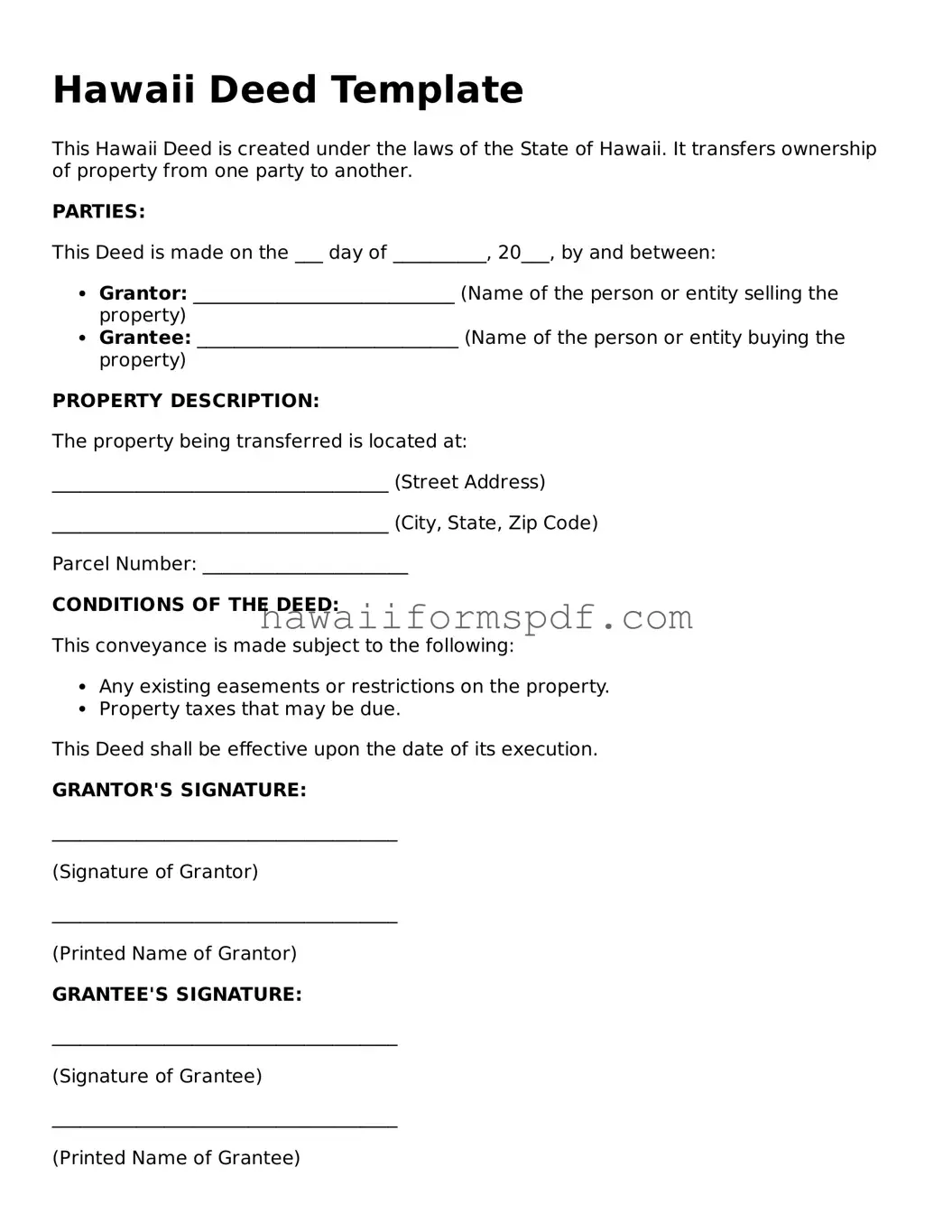Hawaii Deed Template
This Hawaii Deed is created under the laws of the State of Hawaii. It transfers ownership of property from one party to another.
PARTIES:
This Deed is made on the ___ day of __________, 20___, by and between:
- Grantor: ____________________________ (Name of the person or entity selling the property)
- Grantee: ____________________________ (Name of the person or entity buying the property)
PROPERTY DESCRIPTION:
The property being transferred is located at:
____________________________________ (Street Address)
____________________________________ (City, State, Zip Code)
Parcel Number: ______________________
CONDITIONS OF THE DEED:
This conveyance is made subject to the following:
- Any existing easements or restrictions on the property.
- Property taxes that may be due.
This Deed shall be effective upon the date of its execution.
GRANTOR'S SIGNATURE:
_____________________________________
(Signature of Grantor)
_____________________________________
(Printed Name of Grantor)
GRANTEE'S SIGNATURE:
_____________________________________
(Signature of Grantee)
_____________________________________
(Printed Name of Grantee)
NOTARY ACKNOWLEDGEMENT:
State of Hawaii, County of _______________:
On this ___ day of __________, 20___, before me, a Notary Public, personally appeared ____________________ (name(s) of person(s) who executed the instrument).
Notary Public Signature: ___________________________
My commission expires: _____________________________
